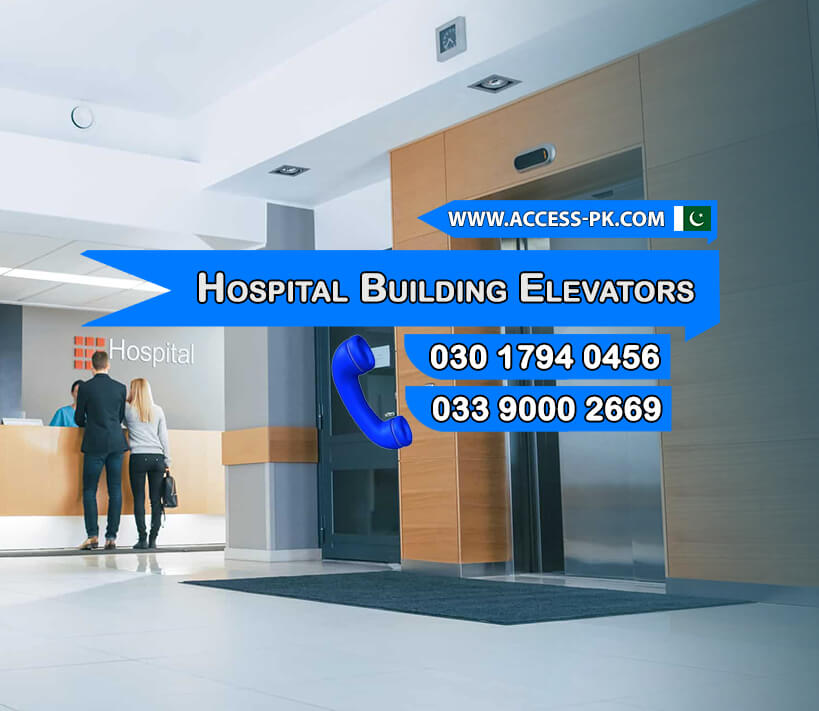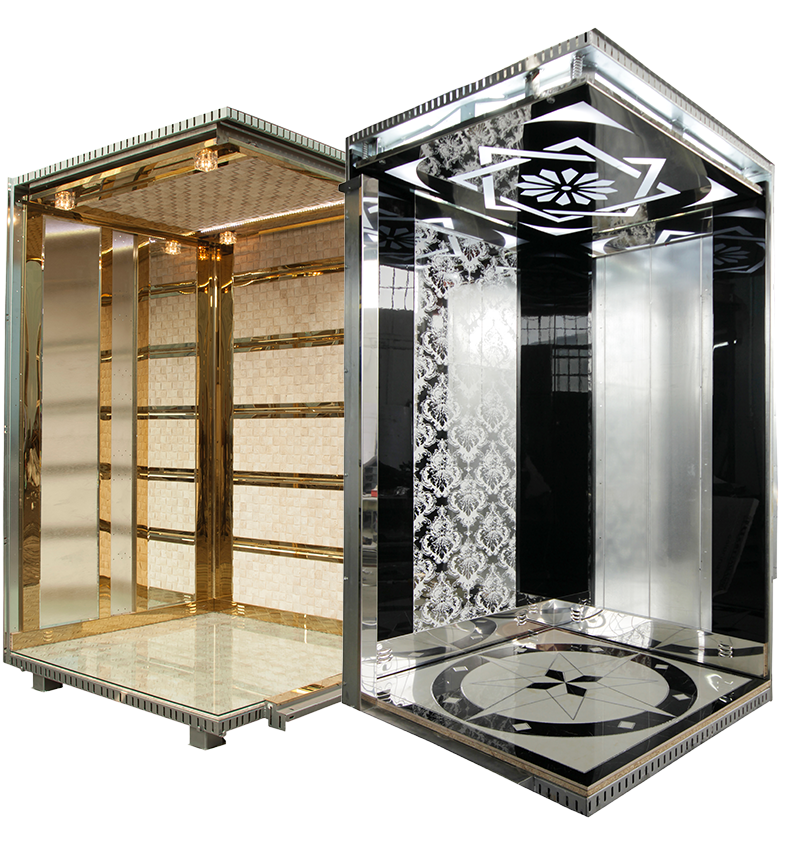Hospital Building Elevators are designed with advanced features to meet the unique needs of healthcare facilities. Access Technologies, owned by Imran Rafi, specializes in providing efficient elevator solutions for hospitals. These elevators are equipped with safety features, ensuring safe and smooth transportation of patients, medical staff, and equipment. Modern systems include anti-bacterial surfaces, emergency power backup, and sensors that prevent accidents. These elevators cater to high traffic volumes, making them a vital component in any hospital’s infrastructure.
A key feature of Hospital Building Elevators is their focus on accessibility. Smart systems, such as voice-activated controls and automatic door openings, are integrated to assist patients with disabilities or limited mobility. Additionally, these elevators are spacious and designed to accommodate medical equipment like stretchers and wheelchairs. This ensures that the elevator services are versatile, offering seamless movement for both patients and hospital staff. Modern elevator designs focus on efficiency, allowing for quick and easy access to different floors of the hospital.
Energy efficiency is another prominent feature in modern Hospital Building Elevators. These systems are designed to reduce power consumption while maintaining optimal performance. By incorporating regenerative drives, these elevators capture and reuse energy during braking, making them eco-friendly. Hospitals often operate 24/7, so efficient lift services help reduce long-term operational costs. Moreover, these elevators feature real-time monitoring systems, enabling hospitals to track performance and identify potential issues before they escalate into major problems. This proactive approach ensures that hospital elevators are always ready to serve when needed most.
Get Free QuotesAdvanced Safety Features in Hospital Elevators
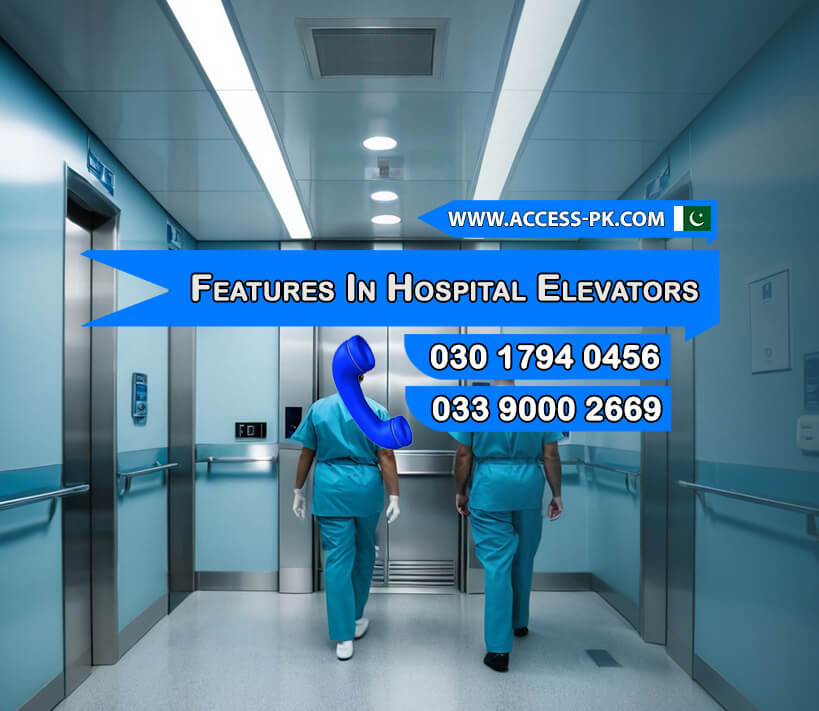
Hospital Building Elevators are designed with top-notch safety features to ensure the well-being of all passengers, including patients, medical staff, and visitors. One of the primary concerns in hospital elevator design is reliability during emergencies. Elevators are equipped with Emergency Backup Systems that activate in case of power failure. This system ensures that the elevator continues to operate smoothly even during a power outage, providing a crucial lifeline for patients who need urgent medical attention. Additionally, hospitals incorporate Antimicrobial Surfaces to help maintain the highest standards of hygiene in these high-traffic environments. These surfaces resist bacteria and viruses, reducing the chances of cross-contamination between patients. Moreover, Smart Safety Sensors play an essential role in enhancing safety.
Emergency Backup Systems
One of the most critical safety features in modern Hospital Building Elevators is the Emergency Backup System. These systems are designed to ensure the elevator remains operational even during power outages, which is vital in a hospital setting. When there is a power failure, the backup system kicks in, allowing the elevator to continue running or return to the nearest floor. This is especially crucial in hospitals, where elevators frequently transport patients to various departments, including emergency rooms and surgical theaters. The emergency power system uses batteries or generators, depending on the hospital’s requirements, and ensures lift services remain available 24/7.
Antimicrobial Surfaces
In healthcare settings, hygiene is a top priority, which is why Antimicrobial Surfaces are crucial in Hospital Building Elevators. These specialized materials resist bacteria, viruses, and fungi, minimizing the risk of infections transferring between patients, visitors, and hospital staff. The surfaces feature a coating that actively inhibits the growth of harmful microorganisms, making them ideal for environments where cleanliness is essential. Hospital elevators, often used by many individuals throughout the day, are high-touch areas where contamination can spread rapidly. By using antimicrobial materials, hospitals can significantly reduce the risk of cross-contamination, ensuring that elevator services remain hygienic and safe for all users.
Smart Safety Sensors
Smart safety sensors in modern hospital building elevators enhance both passenger safety and operational efficiency. These sensors use advanced technology to detect obstacles in the elevator’s path, preventing doors from closing on passengers or equipment. This feature is particularly beneficial when transporting critically ill patients or heavy medical equipment, as it helps prevent accidents and injuries. Smart sensors also play a role in monitoring elevator functionality in real-time. They can detect any mechanical issues or irregularities and alert maintenance teams before they lead to a breakdown. This proactive approach to maintenance ensures that Hospital Building Elevators are always in optimal working condition, reducing the risk of elevator malfunctions that could delay medical procedures.
Get Free QuotesStreamlined Patient Transport with Spacious Designs
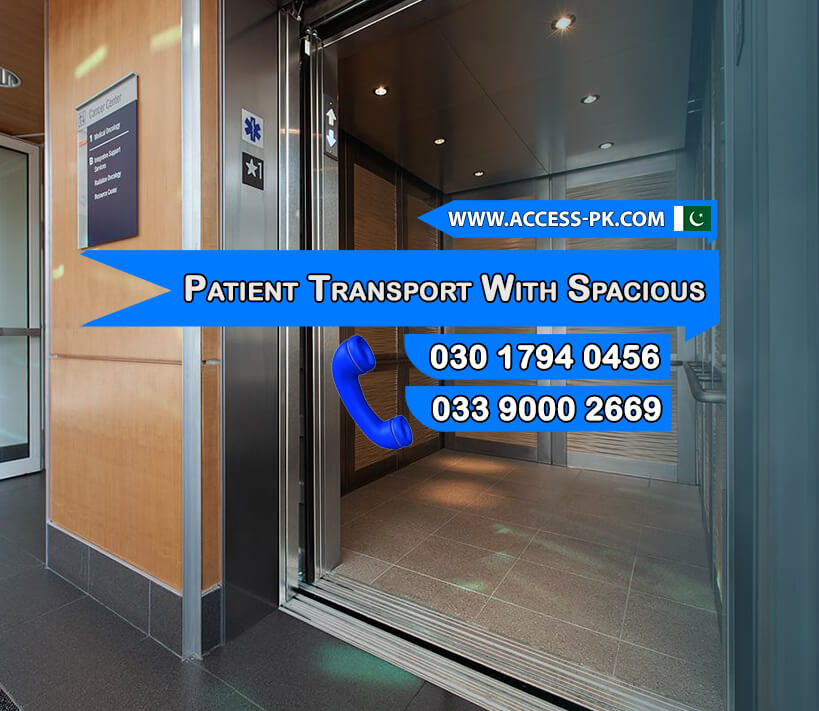
Hospital Building Elevators are designed with spacious interiors to accommodate patients, medical staff, and necessary equipment efficiently. The design of these elevators prioritizes comfort and accessibility, allowing easy movement for stretchers, wheelchairs, and other medical devices. The spacious designs allow the elevator to accommodate patients along with any accompanying medical equipment needed for transport between floors.. This is particularly important in hospitals, where the demand for reliable, efficient transport is high. By providing ample space, these elevators streamline the entire patient transport process, making it smoother for both patients and hospital staff. The design also considers the urgency of medical procedures, ensuring that elevators can operate quickly and effectively in critical moments.
Moreover, the layout of these elevators incorporates user-friendly controls and wider doors for easier access. This makes it more convenient for medical staff to load and unload patients, reducing the time spent in transit. Hospital Building Elevators with spacious designs also help minimize the risk of accidents, as there is more room to maneuver equipment and personnel safely. These features contribute to the overall efficiency of the hospital’s operations, allowing lift services to run smoothly, even during peak times. In addition, hospitals with well-designed elevators create a more comfortable experience for patients, reducing anxiety and improving their overall care experience.
Get Free QuotesEnergy-Efficient Technologies for Sustainable Operation
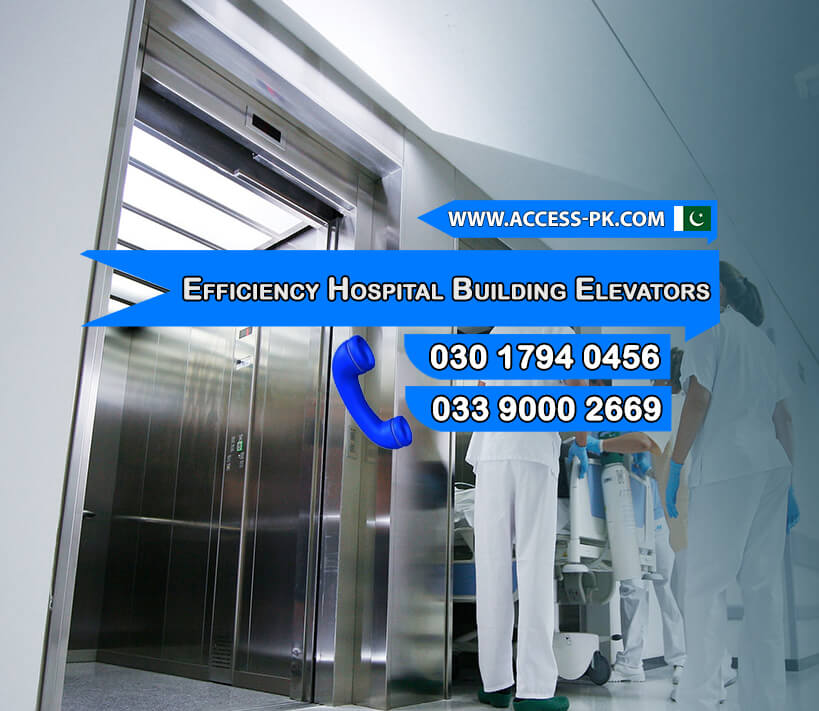
Energy efficiency is a cornerstone of modern Hospital Building Elevators, ensuring that these systems operate sustainably while keeping operational costs low. Advanced technologies, such as regenerative drives that capture and reuse energy during the braking process, power these elevators. This technology allows the elevator to convert excess energy into usable power, reducing overall energy consumption. As hospitals often operate 24/7, this energy-efficient technology helps lower electricity bills while also reducing the hospital’s carbon footprint. The integration of energy-saving features in hospital elevators is vital for sustainable operation and helps meet increasingly stringent environmental regulations.
| Elevator Type | Cost |
|---|---|
| Stair lifts | 810000 to 1770000/Pkr |
| Home Lifts | 1200000 to 2000000/Pkr |
| DIY Food Elevator | 2230000 to 3350000/Pkr |
| Two-Story Home Lift | 7020000 to 8420000/Pkr |
| Hospital Bed Elevators | 4150000 to 8300000/Pkr |
| Panoramic Elevator | 3180000 to 3870000/Pkr |
Furthermore, the use of LED lighting and advanced control systems in Hospital Building Elevators further enhances energy efficiency. These systems automatically adjust lighting and power settings based on usage, ensuring efficient energy use when the elevator remains idle The seamless integration of these technologies ensures that the lift services in hospitals remain cost-effective without compromising on functionality. Energy-efficient elevators also have a longer lifespan, requiring less frequent maintenance and repairs. This reduces downtime and ensures that hospital elevators remain operational, providing a reliable and sustainable transportation solution for patients, staff, and medical equipment.
Get Free QuotesIntegration of Smart Systems for Enhanced Accessibility
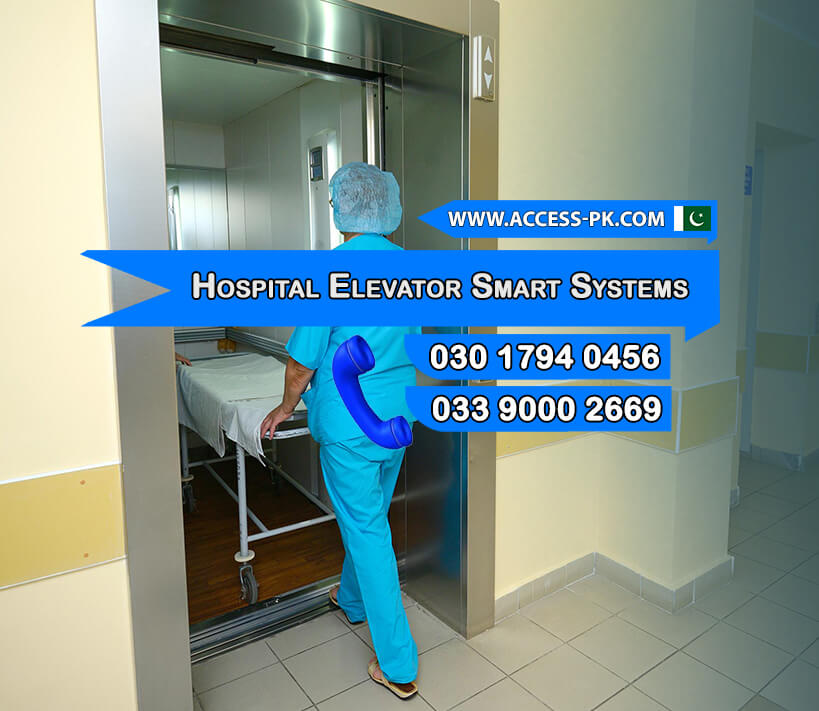
The integration of smart systems in Hospital Building Elevators enhances accessibility, making it easier for patients and staff to move between floors. These smart systems focus on improving the overall user experience while providing greater convenience for those with mobility challenges. One significant advancement in modern hospital elevators is the inclusion of Voice-Activated Controls. This feature allows patients, especially those with limited mobility, to operate the elevator without needing to physically press buttons. By simply speaking commands, patients can call the elevator, select floors, or even request assistance, improving their independence and reducing the need for additional help. Activated controls not only benefit patients with physical limitations but also enhance the overall hospital experience for everyone, offering a seamless and hands-free operation.
Voice-Activated Controls
Voice-activated controls are a game-changer in the design of Hospital Building Elevators. These systems allow users to operate elevators through simple vocal commands, eliminating the need for physical interaction with buttons. For patients who are bedridden, disabled, or otherwise unable to press buttons, voice-activated systems provide a significant level of autonomy and convenience. Hospital elevators equipped with this feature can respond to commands like “Call elevator” or “Go to the fifth floor,” allowing for smoother and faster transportation. Additionally, these systems can integrate with other smart hospital technologies, such as hospital bed tracking, helping to streamline patient transport. The result is an improved experience for patients, medical staff, and visitors, making hospital lift services more accessible to all.
Real-Time Monitoring
Hospital Building Elevators benefit greatly from Real-Time Monitoring systems, which play a key role in enhancing accessibility and overall elevator performance. Real-time monitoring allows hospital staff to track elevator operations continuously, ensuring that everything runs smoothly. These systems provide instant alerts if there are any mechanical issues, helping to identify potential malfunctions before they cause delays or disruptions in lift services. For hospitals, where time is often of the essence, being able to monitor elevator performance ensures that the transportation of patients and staff is as efficient as possible. Moreover, real-time monitoring helps optimize elevator usage, preventing congestion and reducing waiting times. This improves both the speed and reliability of hospital lift services, ensuring that elevators are available when needed most.
Automatic Door Systems
Modern Hospital Building Elevators are often equipped with Automatic Door Systems, enhancing accessibility and ease of use for everyone. These systems automatically open and close doors based on sensor detection, eliminating the need for individuals to physically press buttons or wait for the doors to open manually. This feature is particularly beneficial in hospital settings, where patients may be using wheelchairs or stretchers and need hands-free access to the elevator. Automatic doors also improve the flow of people in busy hospital environments, allowing for faster entry and exit without unnecessary delays. In addition, these systems enhance safety by ensuring that doors do not close prematurely, preventing accidents or injuries. Integrating automatic door systems makes hospital elevators more accessible, efficient, and user-friendly, providing enhanced convenience for both patients and staff.
Get Free Quotes

